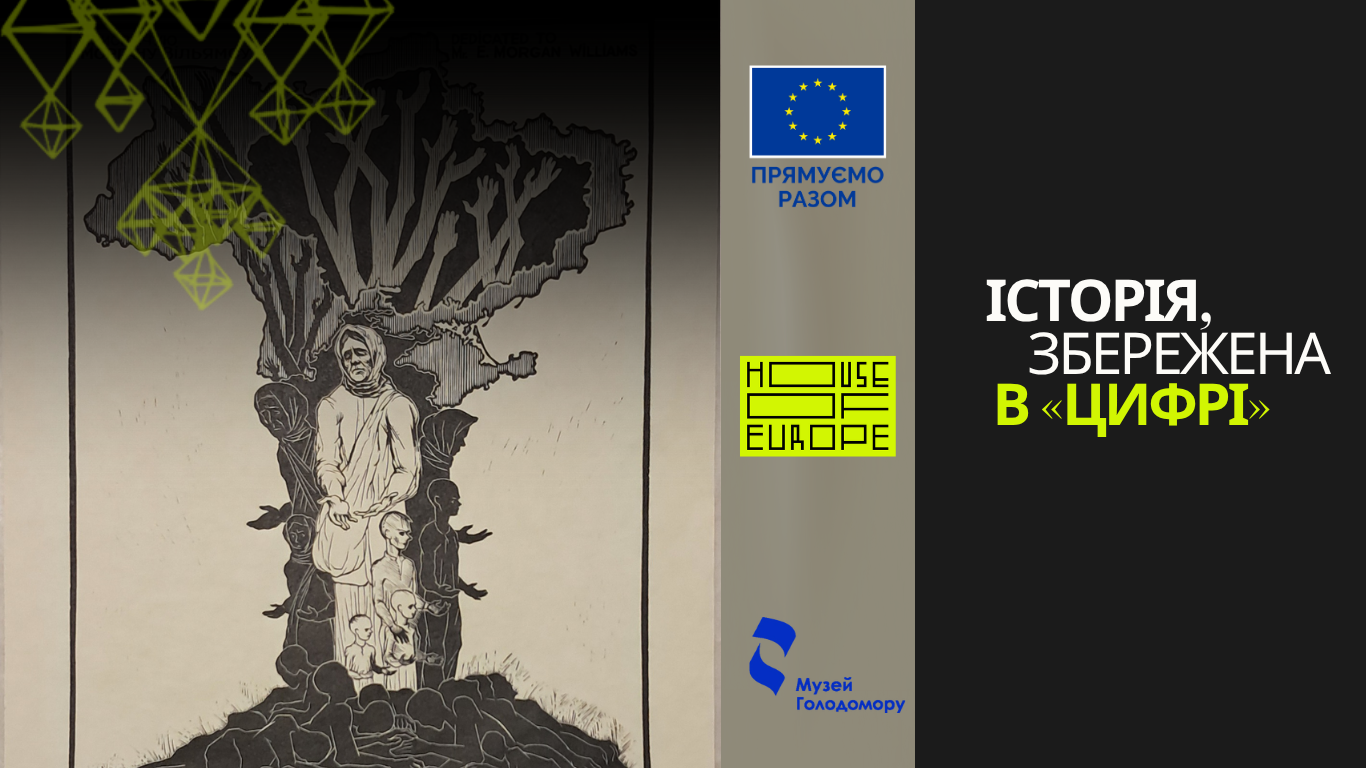Engravings by Artist Mykola Bondarenko Digitised
With each digitised item within the project “History Preserved in Digital Format”, we are getting closer to our goal of digitising a part of the museum collection for preservation for future generations. This time, we would like to share the results of digitising works from the museum collection by the prominent Ukrainian graphic artist Mykola Bondarenko, known for his linocut prints.
Our museum fund contains linocuts from the series “Cookbook”, which the artist completed in 1993, as well as other works dedicated to the Holodomor that were created later.
When he was a child, the artist learnt about the Holodomor from his grandmother Mariia for the first time. His grandmother’s words that “a hunger strike is worse than a war” have always remained in the artist’s memory. Afterwards, he repeatedly heard stories about the Holodomor from relatives and neighbours and what people did to survive. Of all these stories, the one that struck the artist the most was the “menu”, the set of “products” people used to survive the famine: bark and leaves of trees, various herbs, roots, cakes made from ground acorns, chaff and other surrogates. It was this that prompted Bondarenko to realise the concept of his future work because, as the artist himself noted: “From the very beginning, I understood that the topic of the Holodomor should be shown not “in the forehead” (tortured people, skeletons, etc.), but through the food that, according to eyewitnesses, was consumed in those days. And I had a question: how were those leaves and roots used? Did they just pick them up and eat them? I asked people to recall the ways of cooking that food. That is how those sad “recipes” appeared, and hence the title, “The Cookbook”.
To deepen his understanding of the topic, Mykola Bondarenko began recording eyewitness accounts of the Holodomor and researching archival documents from his native Buryn district of the Sumy region, where he comes from. Later, the results of this work became part of his album of engravings, “Ukraine – 1933: A Cookbook. Human Memory”.
The artist conveyed the “recipes” of the surrogates to his engravings, which he depicted in the form of windows: “I decided that a sheet of engraving is a window of a peasant’s house and a person’s view of the world of God through it!” The window frame symbolically resembles a cross, which divides this view into four parts: three light ones, through which one can see the hope of salvation from hunger – plants and other surrogates and one dark one with the recipe itself. Below the inscription “Ukraine – 1933,” and on both sides, as if squeezed, are red five-pointed stars, symbols of the communist regime that committed genocide.
In addition to his works on the Holodomor, the artist left a significant creative heritage: over five hundred linocuts and the same number of bookplates. His works adorn the collections of Ukrainian and world museums, including those in Japan, France, and the United States, as well as Ukrainian and European private collections. Mykola Bondarenko is also the author of the Memorial to the Holodomor Victims of 1932-1933 in the village of Pisky in the Sumy region and the monument in the village of Chernecha-Sloboda.
The project “History Preserved in Digital Format” is supported by the European Union under the House of Europe programme. We invite you to stay tuned to learn more about the digitised collections.
